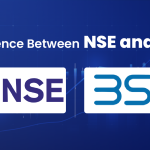What is IDCW?
IDCW stands for Income Distribution cum Capital Withdrawal. It is a term used in the context of mutual funds to describe a specific type of distribution made to investors. Previously known as “dividend,” IDCW represents the portion of a mutual fund’s earnings that is distributed to its investors. This can include profits generated from the fund’s investments, which may come from dividends received from stocks, interest from bonds, or capital gains from the sale of securities.
When a mutual fund declares an IDCW, it means that the fund will distribute a certain amount of money to its investors. This distribution can take the form of cash payouts or reinvestment of the earnings back into the fund, depending on the investor’s preference.
Importance of Understanding IDCW for Mutual Fund Investors
- Investment Strategy Alignment: Understanding IDCW is crucial for investors to align their investment strategies with their financial goals. Some investors may prefer regular income from their investments, while others may focus on capital appreciation. Knowing how IDCW works helps investors choose the right mutual funds that fit their income needs.
- Impact on NAV: When a mutual fund declares an IDCW, the Net Asset Value (NAV) of the fund typically decreases by the amount distributed. This is because the assets of the fund are reduced by the payout. Investors should be aware of this effect, as it can influence their perception of the fund’s performance.
- Tax Implications: IDCW distributions may have tax implications for investors. In many jurisdictions, dividends or distributions are subject to taxation. Understanding how IDCW is taxed can help investors plan their tax liabilities effectively and make informed decisions about when to invest or redeem their units.
- Reinvestment Options: Many mutual funds offer a reinvestment option for IDCW, allowing investors to automatically reinvest the distribution back into the fund. This can be beneficial for long-term growth, as it allows investors to take advantage of compounding returns. Understanding this option can help investors maximize their investment potential.
- Cash Flow Management: For those who rely on their investments for regular income, such as retirees, understanding IDCW is essential for cash flow management. Knowing when and how much income to expect from their investments can help investors budget their expenses and plan for future financial needs.
- Market Sentiment: The frequency and amount of IDCW distributions can also be an indicator of a mutual fund’s performance and the fund manager’s confidence in the fund’s strategy. Regular and substantial distributions may signal strong performance, while irregular or minimal distributions could raise concerns. Investors should consider these factors when evaluating a fund.
- Comparison with Growth Funds: Investors should understand the difference between IDCW and growth options in mutual funds. Growth funds reinvest all earnings back into the fund, focusing solely on capital appreciation. By understanding IDCW, investors can make informed comparisons between income-focused and growth-oriented funds.
- Informed Decision-Making: Lastly, a clear understanding of IDCW empowers investors to make informed decisions about their investments. Whether they choose to receive distributions or reinvest them, knowing how IDCW works allows investors to tailor their portfolios to meet their specific financial objectives.
Conclusion
In summary, IDCW is a vital concept for mutual fund investors to grasp. It represents a method of distributing earnings from a mutual fund and has implications for investment strategy, tax planning, cash flow management, and overall portfolio performance. By understanding IDCW, investors can better align their investments with their financial goals, make informed decisions, and optimize their returns. As with any investment, staying informed and educated is key to successful investing in mutual funds.











